| Now the central cross-members
have to be constructed. The original chassis seemed to be weak in
construction
to take up the stresses of a powerful machine, so the cross-members
were
built without being faithful to the original. The material used is 0.2
mm thick brass sheet. The developments are traced and cut out.
Lightening
holes were drilled before bending. Pliers were used for
bending. |
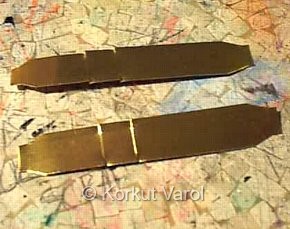 . .
|
The two sides
of the central cross-member
are now united with a central section. This central section seen was
later
cancelled because the transmission had to be there, or else the engine
would be too much in the front. |
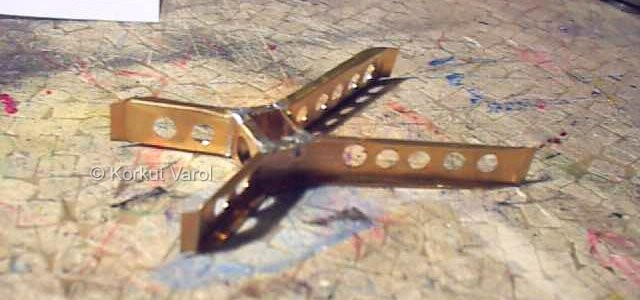
|
| The side frame and central
cross-member are joined with solder. To do this, first the mating
locations
on the surfaces of the members are covered with solder, then brought
together
and heat applied with the combined pressure of soldering iron from
above.
The soldering iron has to be at least 100 Watts to give in heat faster
than it dissipates through the metal. The pre-solders between the items
melt and firmly hold the pieces together. Be sure to have a
low-conductive
material (wood is OK) below the workpiece, to keep the heat within the
workpiece. |
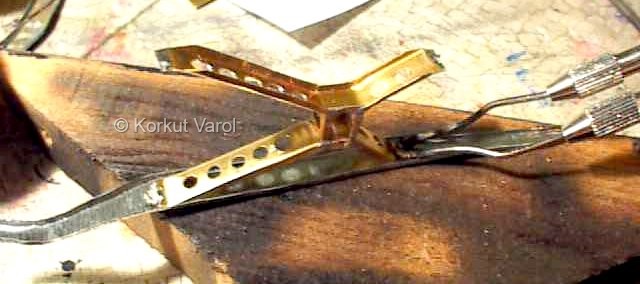
|
| The front transverse
member is still from 0.3 mm galvanized steel to be strong. The first
pic
is primary bending after development cutout. The second one is the
final
shape given with round pliers. |
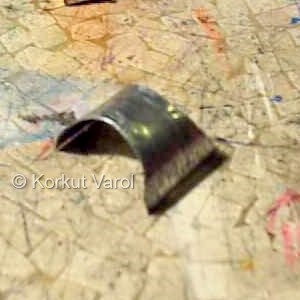 .. ..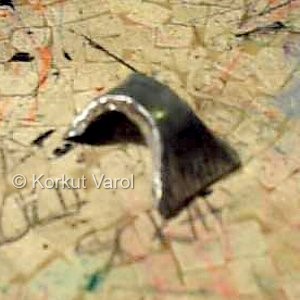
|
| Now the chassis is semi-complete
with the addition of the rear transverse member, having lightening
holes
on it. The front member was soldered with fill-in technique because the
items did not have flat mating surfaces. Note the center part is
removed
by now. |

|
| This is the last transverse
member to be located at the very back of the central cross-member, also
where the front brackets of the leaf springs be located. The bottom
part
is curved to provide space for the driveshaft motion. |

|
| The chassis is shown
with the above mentioned member put in place. Also, two engine mounting
brackets are soldered in place. The center element is replaced by a
tubular
member. |

|
| On the left is the upper
bracket that will carry the helical spring and the tip of the shock
absorber.For
the circular pressed part, a wooden male and female die parts were made
and the pressing was obtained by light hammering on the male. The rest
was bending with appropriate tools. The inside of the bend was
strengthened
with filling solder. On the right, you see them mounted on the chassis.
Below these units are the parts to hold the wishbones but I was so
concentrated
on the work that I forgot to take their pics. |
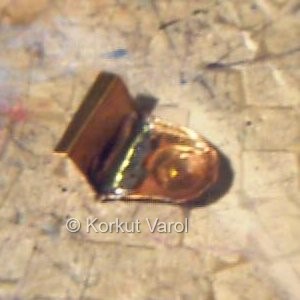 .. ..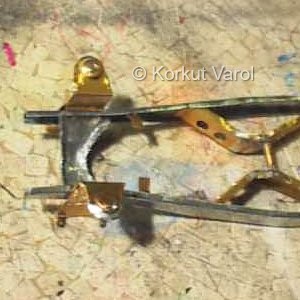
|
| This is the bottom view
of the front end. Two brass rods were soldered between the lower
wishbone
bracket edges, also taking strength from the center of the front
transverse
member. |
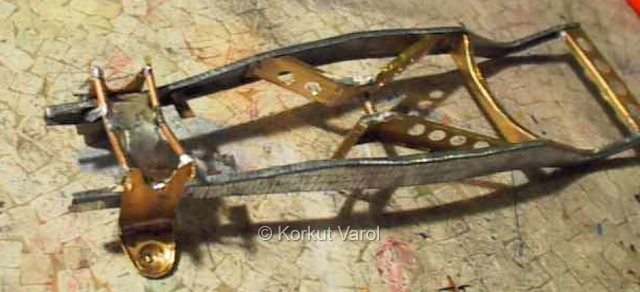
|
| This is the front ass'y
without the springs and shocks. The wishbones were bent to a special
profile
to make room for the spring. Pins were soldered at the ends of the
wishbones,
the brackets on the chassis were opened a bit wide to fit the wishbones
in their holes, then closed to original position to hold the ass'y
without
letting it loose. |
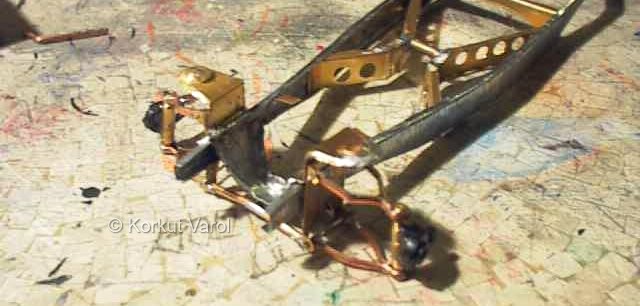
|
| Testing the linkage
motion before spring and shock absorber assembly. |
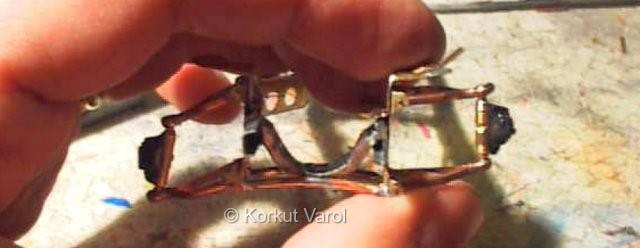
|
| The front shock absorbers
are made from brass rod machined at the end to form the lower eye, and
the upper part from brass tubing. On the top, the head part of a nail
is
cut to 2mm. length and soldered to the tubing to form the upper
connection. |
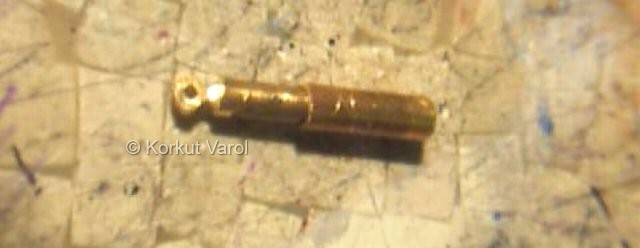
|
| On the right is the
assembled view of the front suspension. The white PVC on top of the
shock
absorber is a temporary "nut" to keep the upper part of the absorber in
place. |
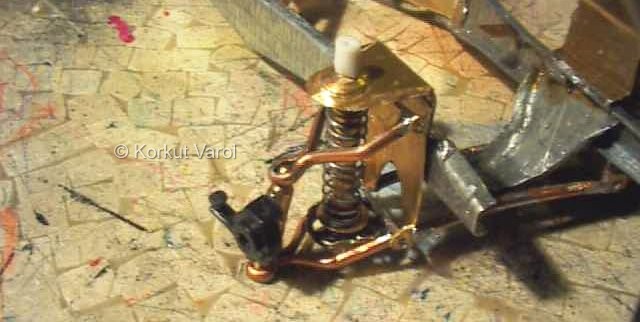
|
| The testing
of the assembled front suspension. |
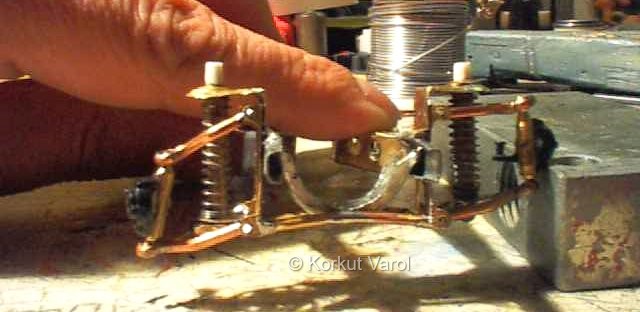 |

|
 
|

